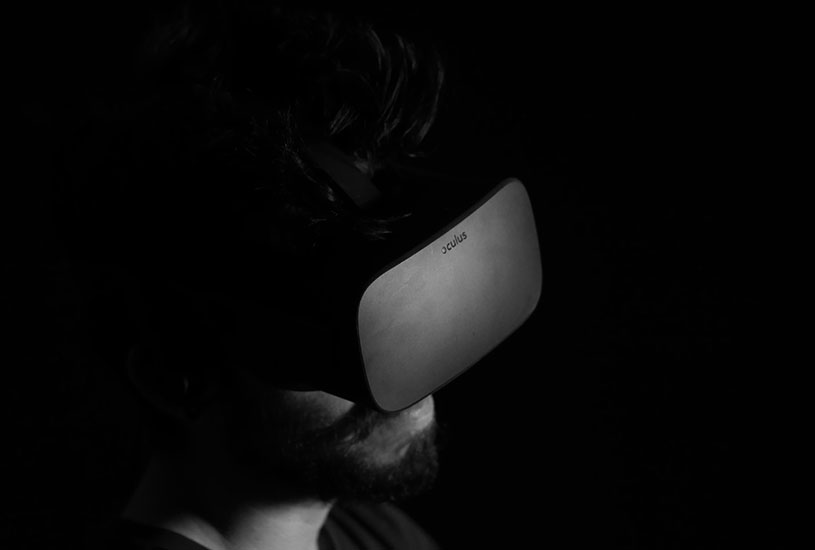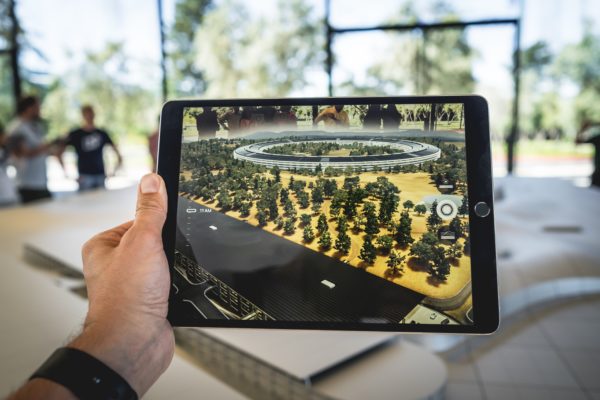A collaborative project between Deakin Motion.Lab and the City of Melbourne opens up new avenues for the use of virtual reality in future planning.
Major changes to city infrastructure can be tough to get past residents who love their urban environment and want a voice in how it should look.
Now, researchers from Deakin University’s Deakin Motion.Lab have worked closely with the City of Melbourne to develop a virtual reality (VR) experience that allows participants to see what proposed changes might look like before they are implemented.
Dr Jordan Beth Vincent, project leader for “Green Your Laneway” VR said the project drew on all of Deakin Motion.Lab’s areas of expertise, from technical to artistic.
Dr Vincent explained the brief was to present a VR proof of concept that showed what Melbourne laneway Meyers Place could look and feel like at different times of the day if it were made “greener.”
“If we can put this environment in VR, we can show people plans for change and get genuine buy-in to the ideas,” she said.
To recreate the laneway in VR, the Deakin Motion.Lab team used photogrammetry, a method of employing photography to construct 3D graphic replicas.
“We took close to 2500 photographs of Meyers Place and rebuilt it in our game engine from the big buildings down to the smallest bit of graffiti,” Dr Vincent said.
“We have characters that move through the scene at different times of day to really bring things to life, and greenery that grows to show how things might change.
[testimonial_text]This gives the user the sense that they are really there in the space, and allows us to tell a story of what a future Melbourne — a greener Melbourne — might look like.[/testimonial_text]
[testimonial_picture name=”Dr Jordan Beth Vincent” details=”Deakin Motion.Lab”]
 [/testimonial_picture]
[/testimonial_picture]One of Melbourne’s oldest laneways, Meyers Place runs between Little Collins and Bourke Streets at the top end of town and was selected as one of the pilot projects for the City of Melbourne’s “Greening your Laneways” campaign.
Deakin Motion.Lab used the campaign’s original concept imagery to visualise what a “greener” laneway would look like and, in the process, discovered new ways of integrating photogrammetry, motion capture and VR.
“We had to develop some novel ways to deal with things like foliage,” Dr Vincent explained.
“When objects like leaves or blades of grass are small, they can appear to flicker in the scene so we developed methods for managing the thousands of leaves in the scene. We also had to think a lot about how users would interact with this virtual Meyers Place in a way that would be really comfortable and accessible to explore in a virtual world.”
A key part of the process was knowledge transfer from Deakin Motion.Lab to City of Melbourne. The collaboration was a unique opportunity for City of Melbourne to build capability in a rapidly emerging technology, as VR puts the user in a scene in a way that is not possible using other forms of visualisation.
Dr Vincent and the Deakin Motion.Lab team worked closely with the team at the City of Melbourne to develop the scene, using some of the data that the City collects.
“The City of Melbourne has collected data to make a 3D representation of the entire city. This was an amazing resource, and our job was to translate that content into a form that could allow for a VR experience to be created,” Dr Vincent said.
“This was a small project with a potentially huge profile that has resulted in a great relationship with the City of Melbourne and new outcomes for VR, motion capture and art,” Dr Vincent said.
- The “Green Your Laneway” VR experience will be showcased at the 2018 Melbourne Knowledge Week (7-13 May) as part of the Melbourne City DNA exhibition. Visit https://mkw.melbourne.vic.gov.au/events/melbourne-city-dna/ for more information.
Main photograph: Deakin Motion.Lab technical artist Shanique Hallgren and the “Green Your Laneway” VR experience, created in partnership with the City of Melbourne.
Published by Deakin Research on 30 April 2018



